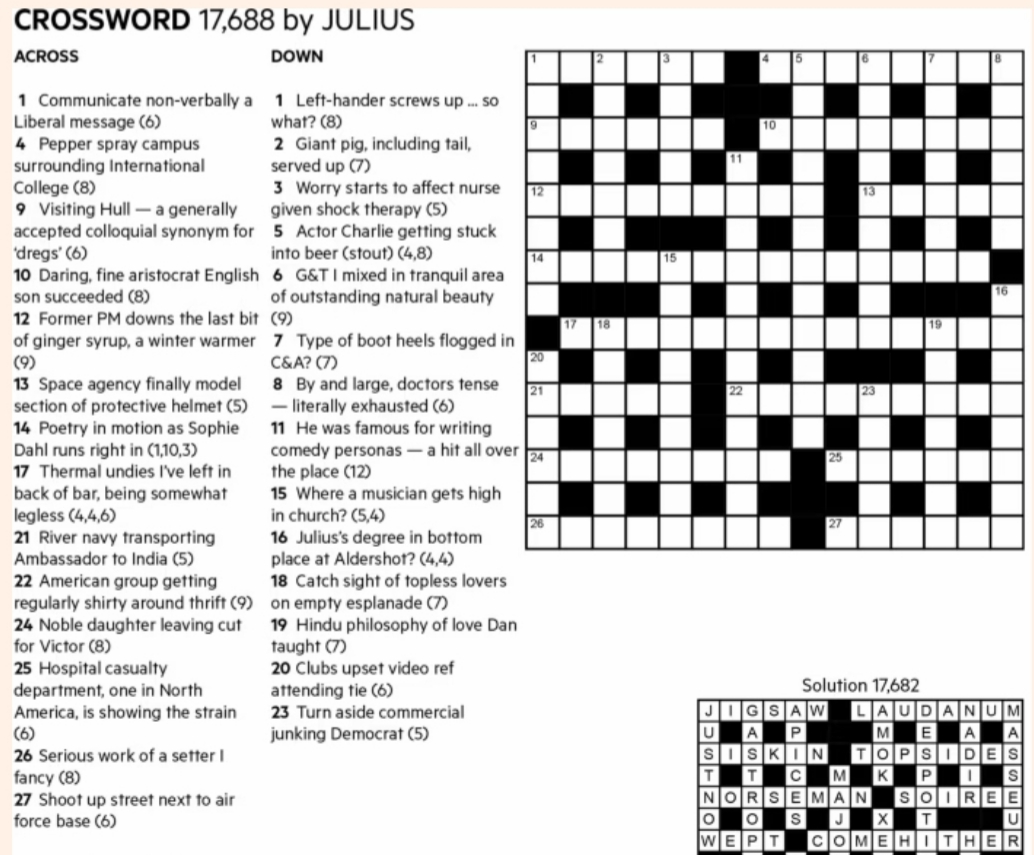Will language models solve cryptic crosswords by end of 2026?
14
1kṀ3292027
73%
chance
1D
1W
1M
ALL
If a large language model can solve >90% of clues from Financial Times cryptic crosswords then yes otherwise no. Crossword layout as context is allowed.
Here's an example FT crossword:

For example, 2 down is "Giant pig, including tail, served up (7)". Pig is "hog", put tail inside to get "htailog" then reverse it to get "goliath".
This question is managed and resolved by Manifold.
Get 1,000 to start trading!
1,000 to start trading!
Sort by:
In isolation or given the crossword layout as context?
I would argue that 90% of the challenge is eliminated by having the crossword as context (number of letters, positions of letters). In fact, I wouldn't be surprised if many cryptic crosswords could be solved without the clues - just the crossword itself.
Without the crossword layout, I think there is a high degree of ambiguity and 90% might be impossible.
Related questions
Related questions
Will a large language model beat a super grandmaster playing chess by 2028?
66% chance
Will language models be able to solve simple graphical mazes by the end of 2025?
51% chance
Will a Large Language Model save a human life through medical advice by the end of 2025?
90% chance
Will there be an AI language model that strongly surpasses ChatGPT and other OpenAI models before the end of 2025?
45% chance
Will Transformer based architectures still be SOTA for language modelling by 2026?
79% chance
Will we reverse-engineer a language model into an interpretable (python) program by 2027?
8% chance
Will any 10 trillion+ parameter language model that follows instructions be released to the public before 2026?
43% chance
Will someone solve the Scorpion Ciphers by the end of 2032?
38% chance
Will a Large Language Model be listed as an author on a peer-reviewed paper by the end of 2025?
30% chance
Will all of the publicly accessible parts of heavengames.com/aok.heavengames.com become part of a large language model like Claude or GPT by 2025?
59% chance